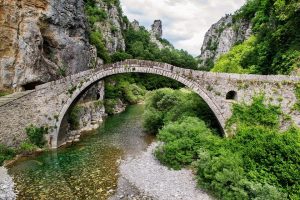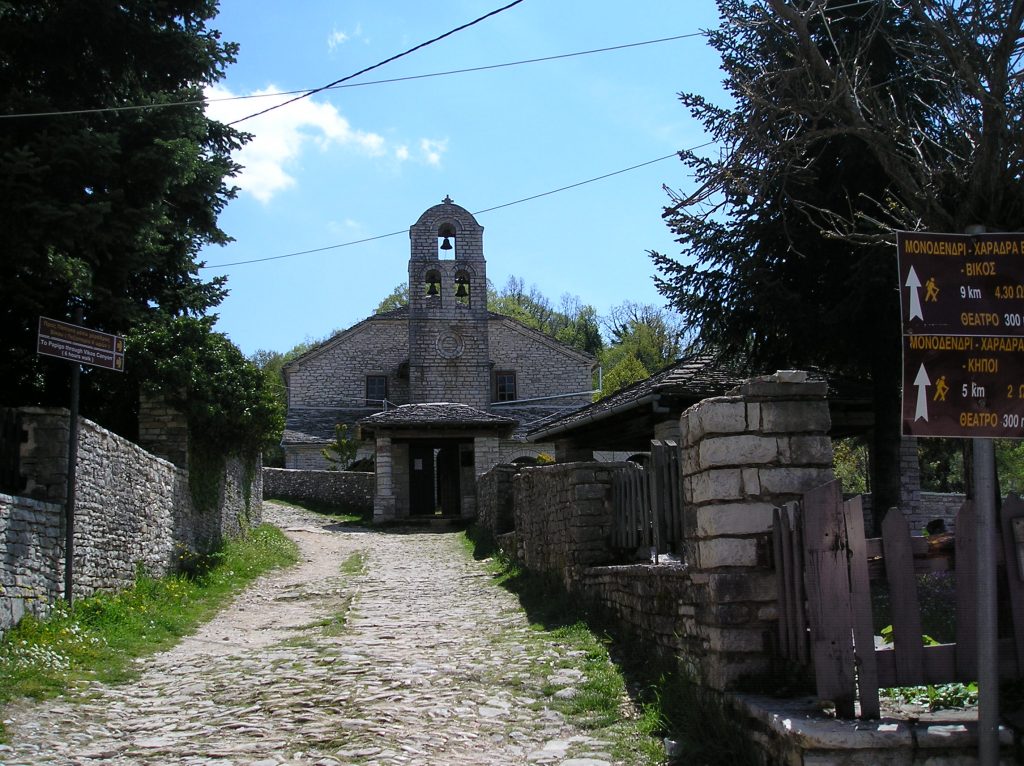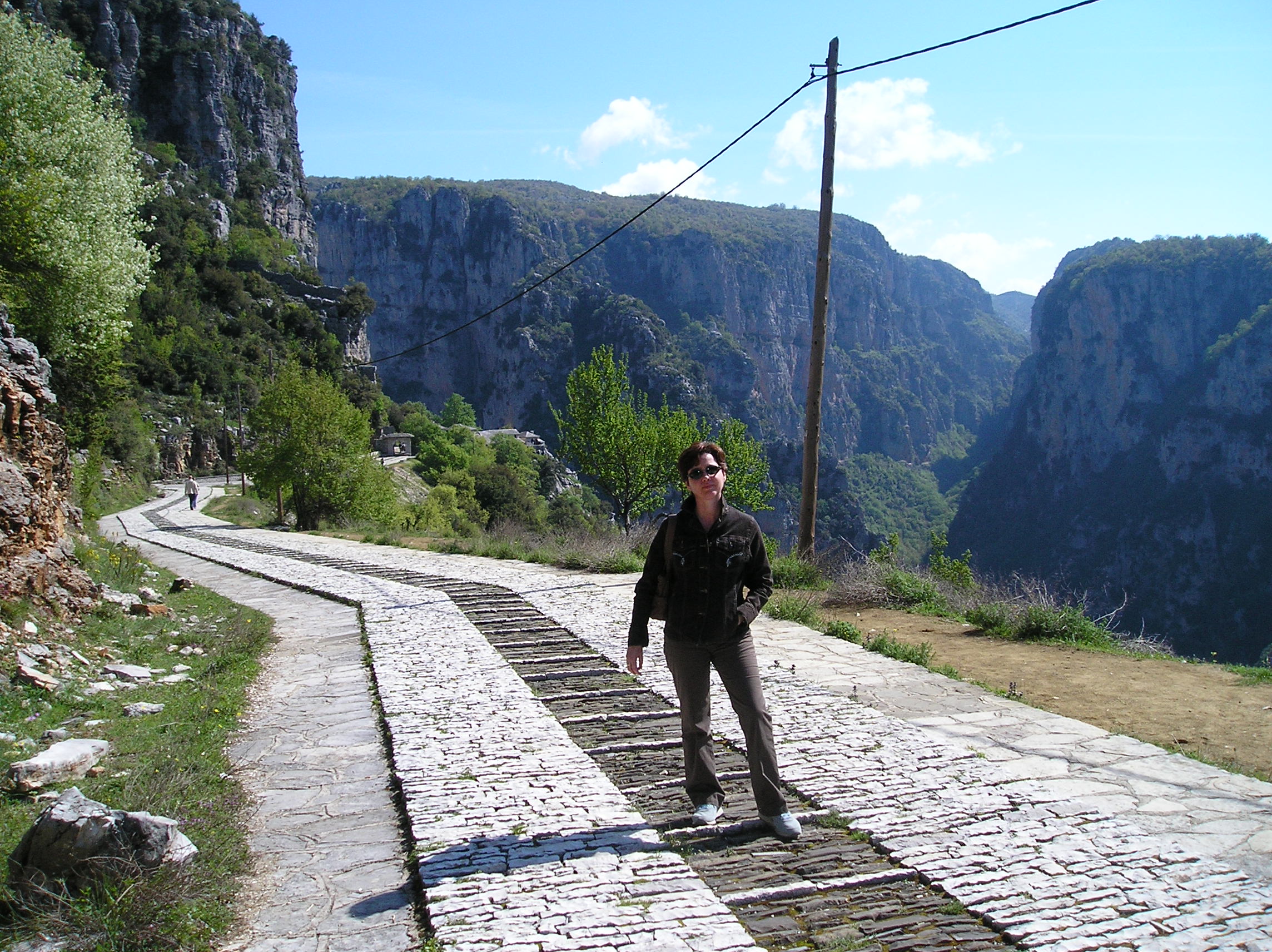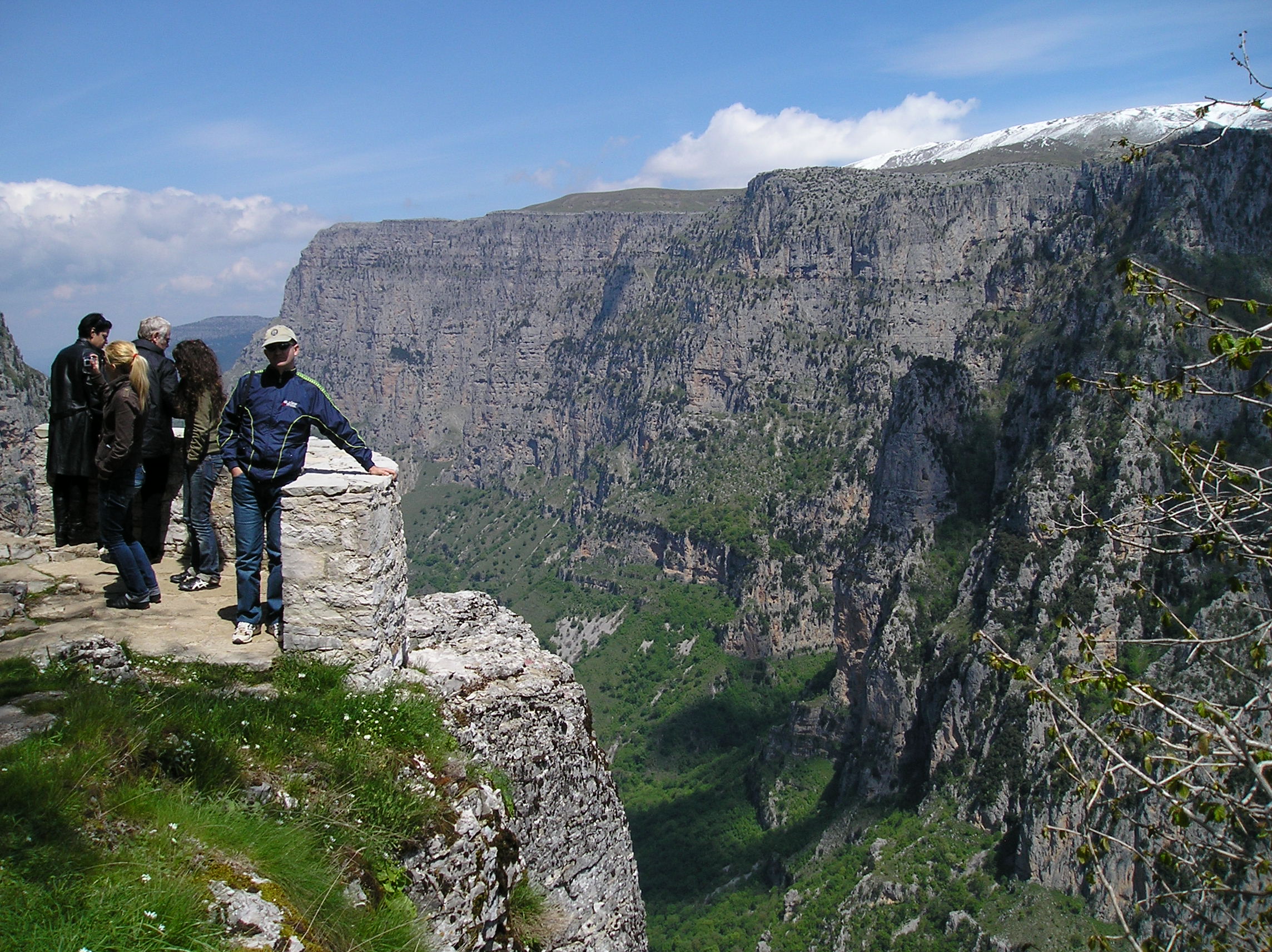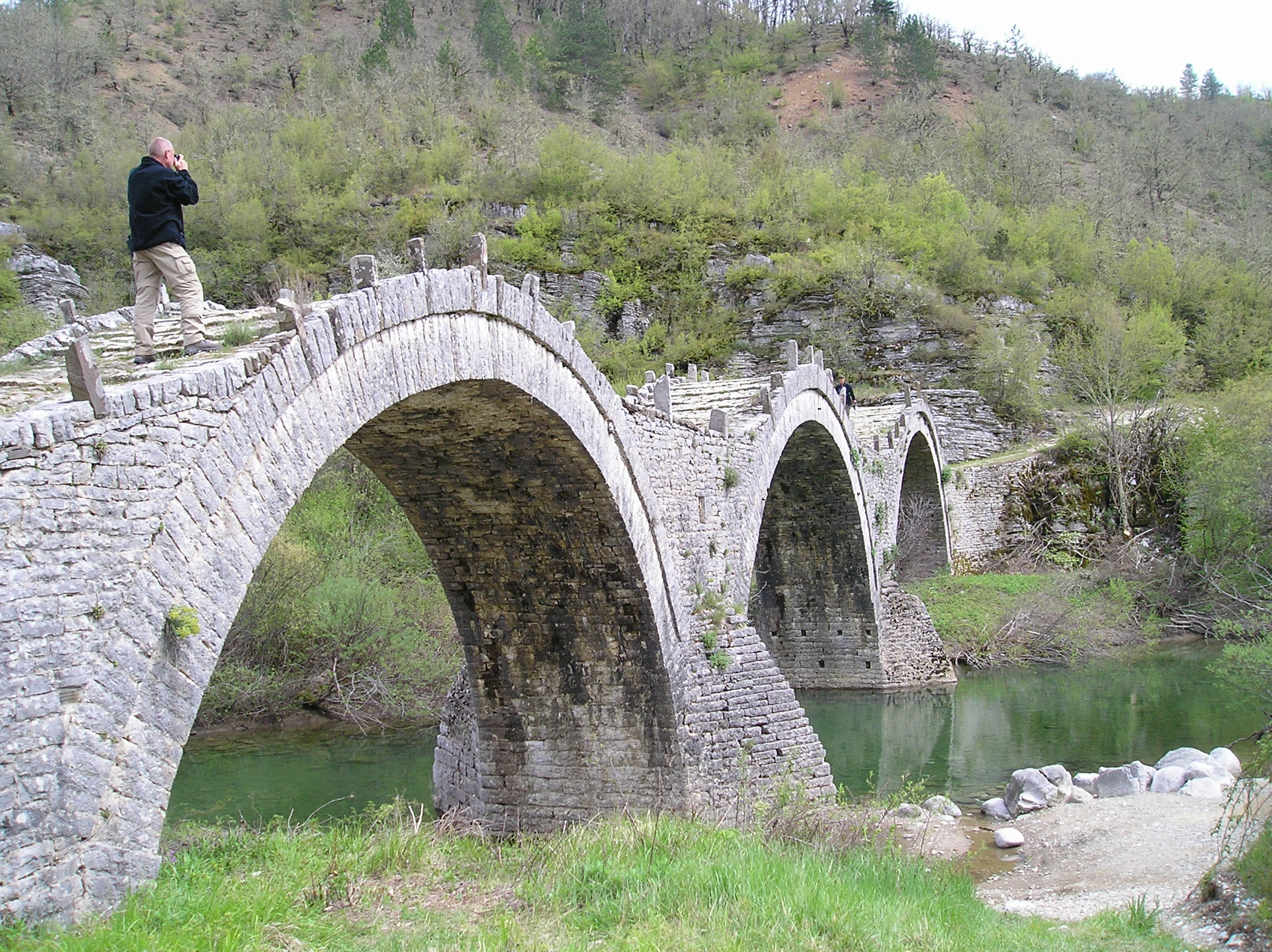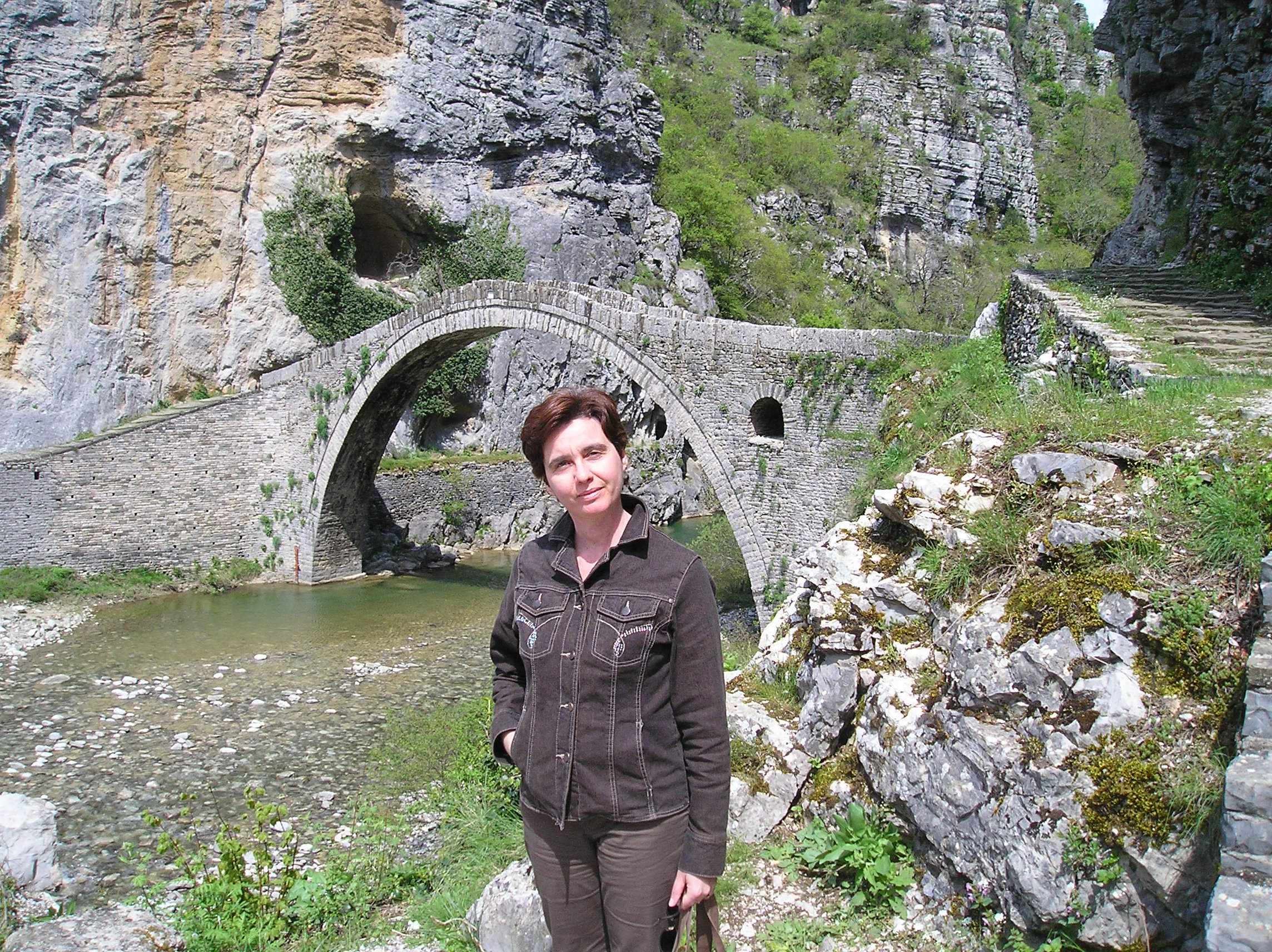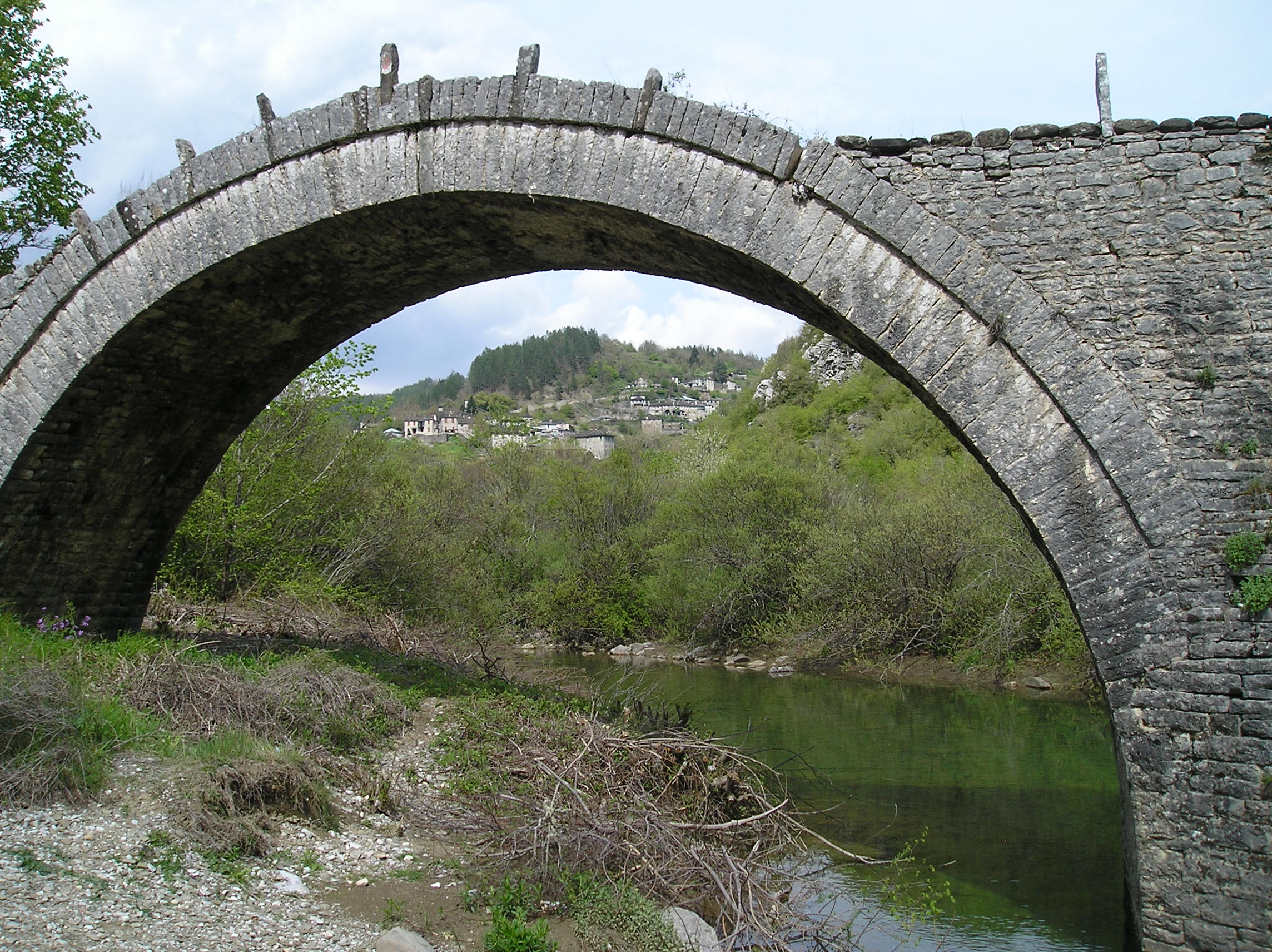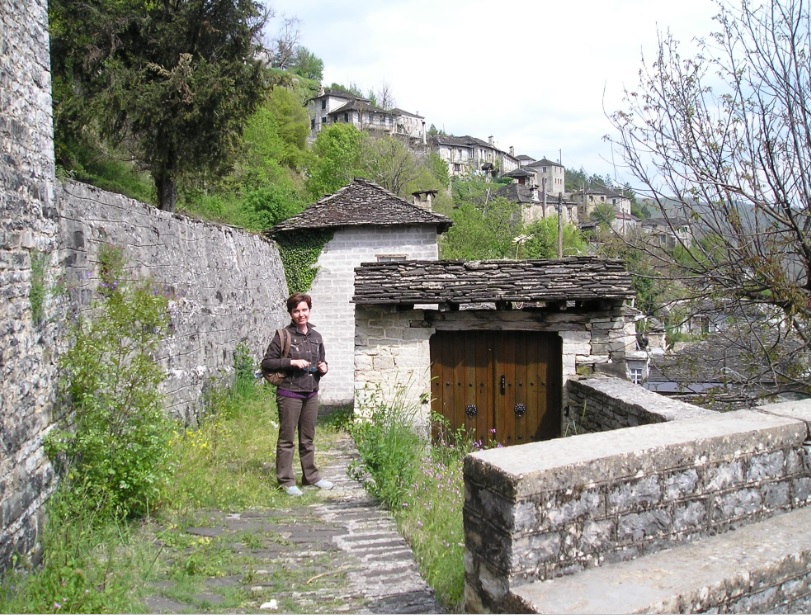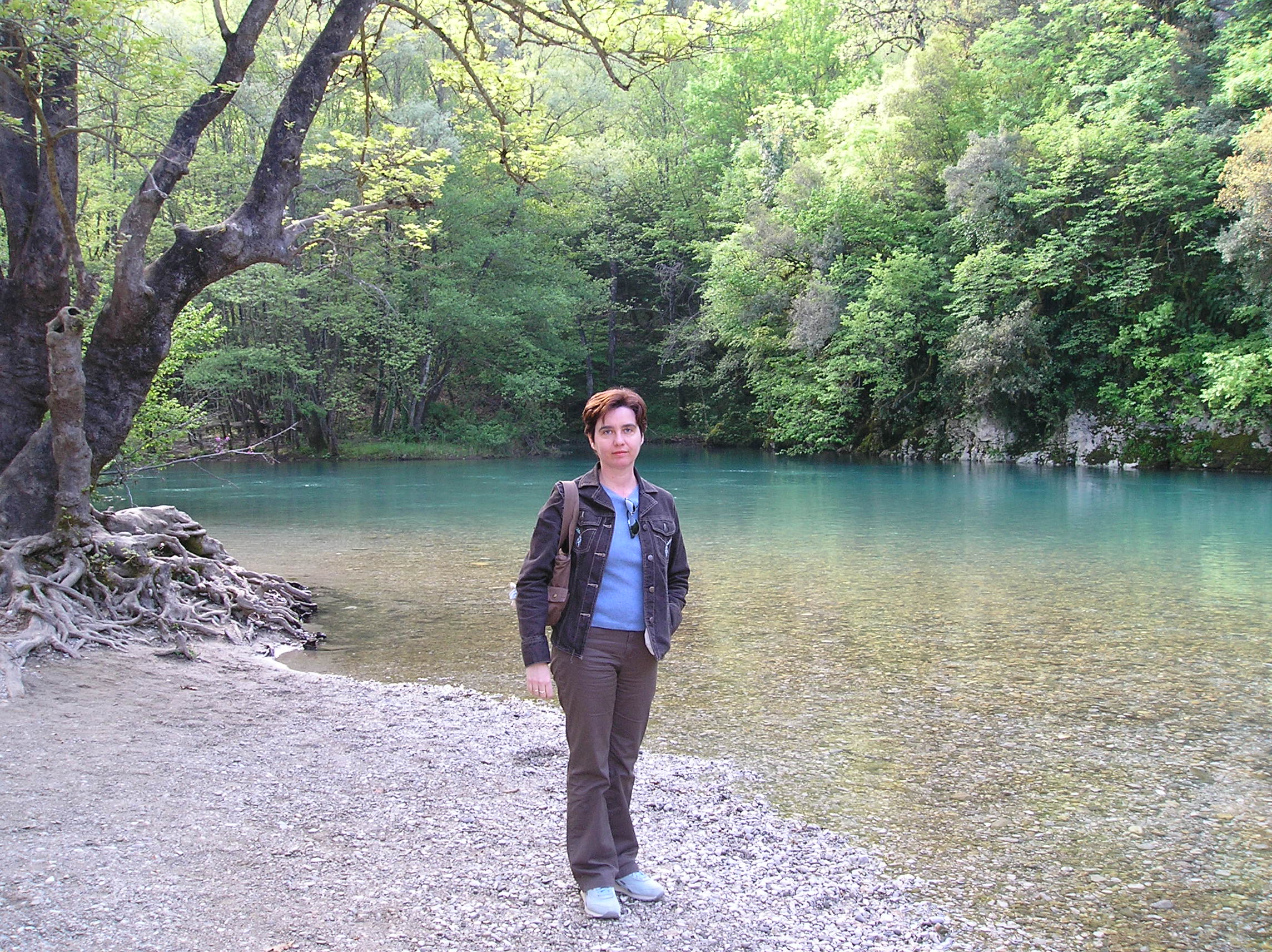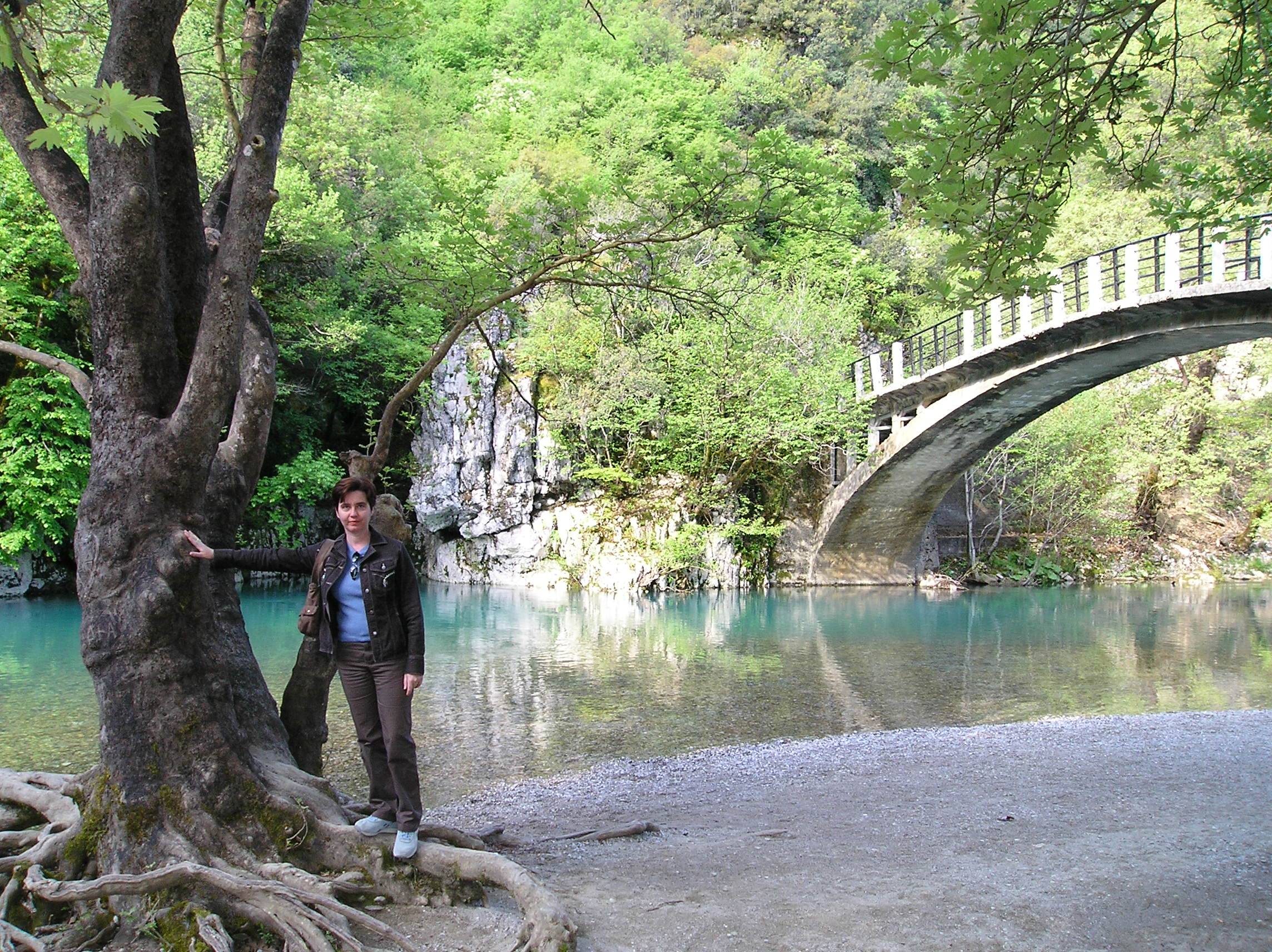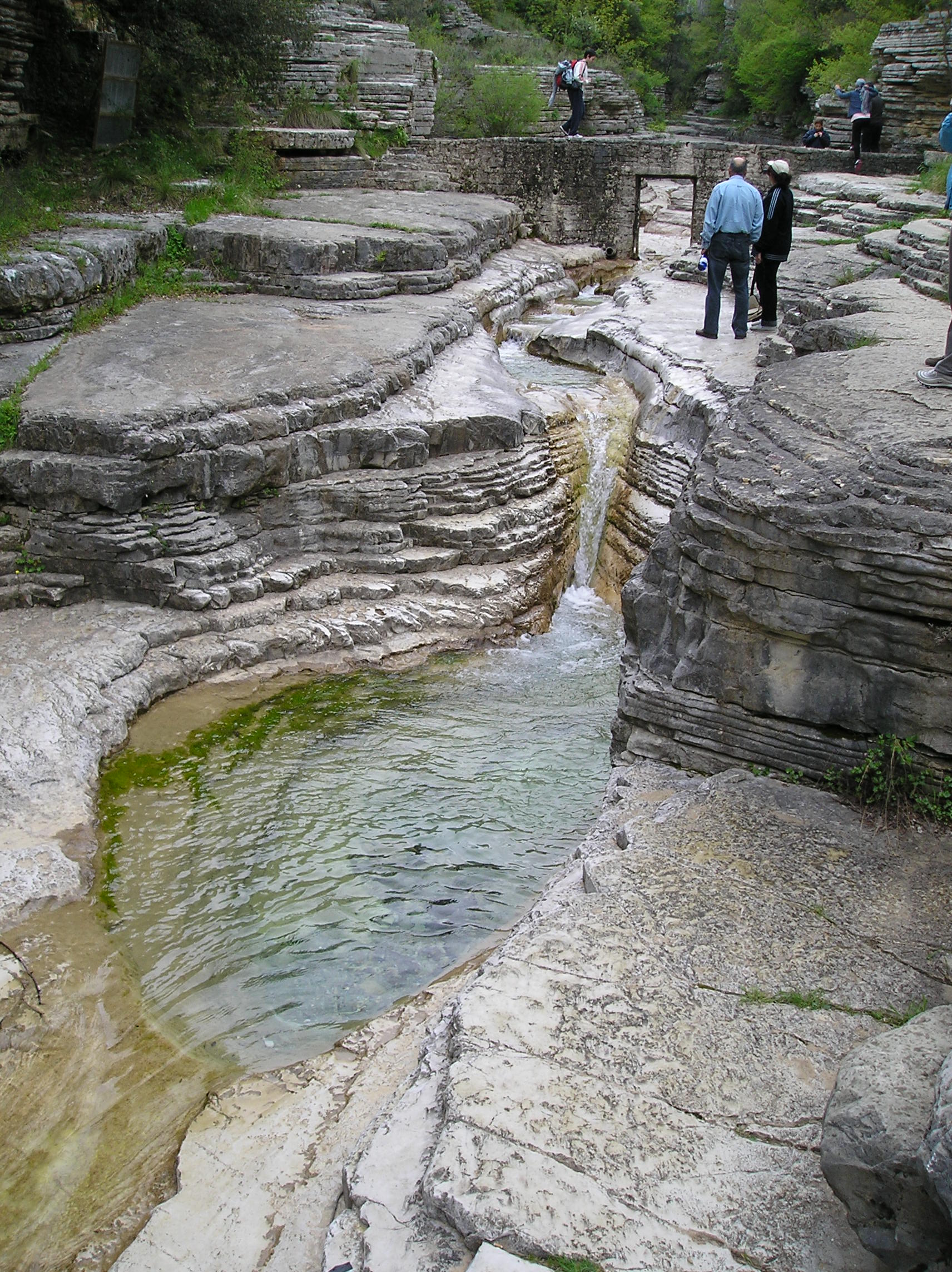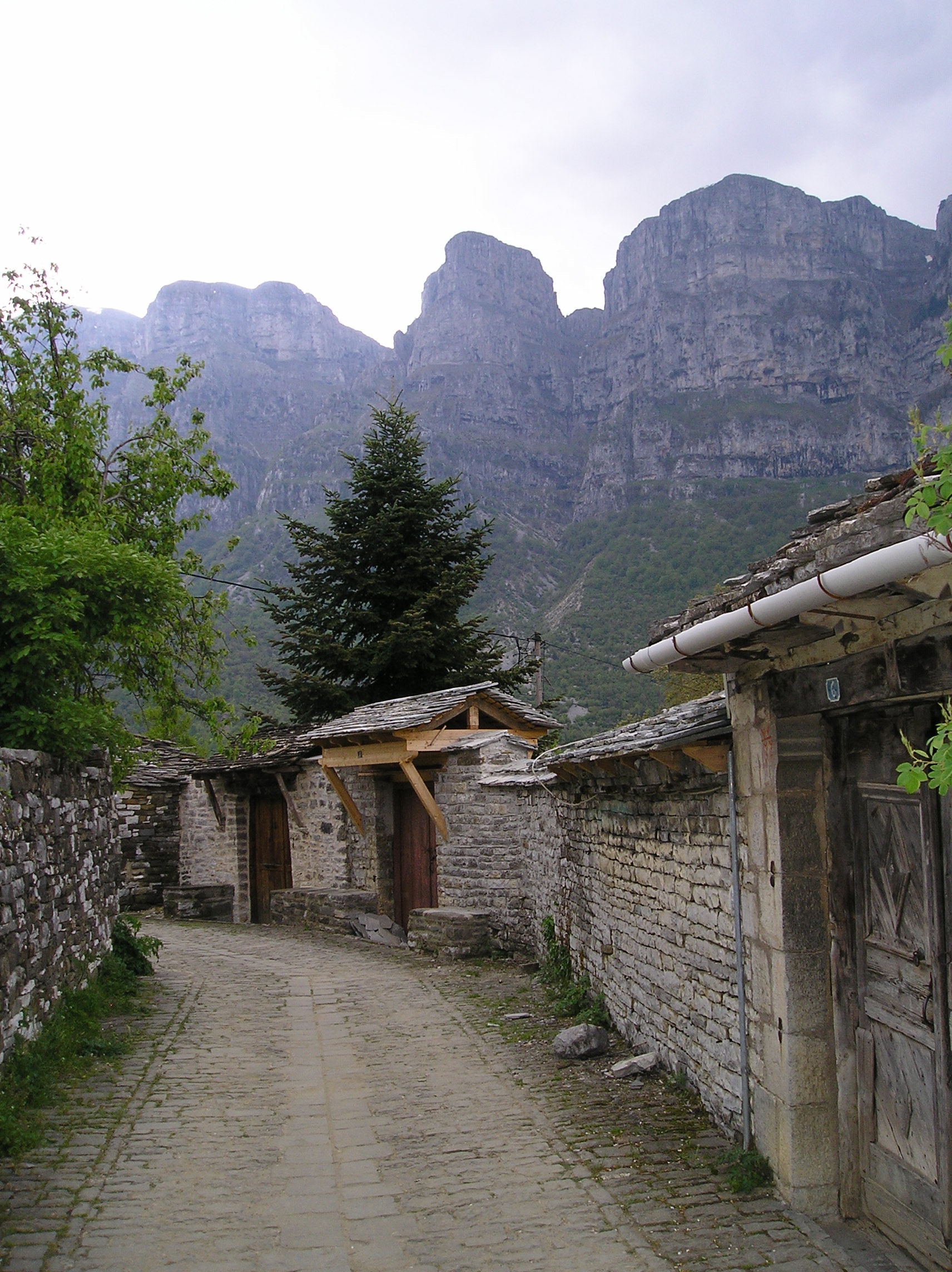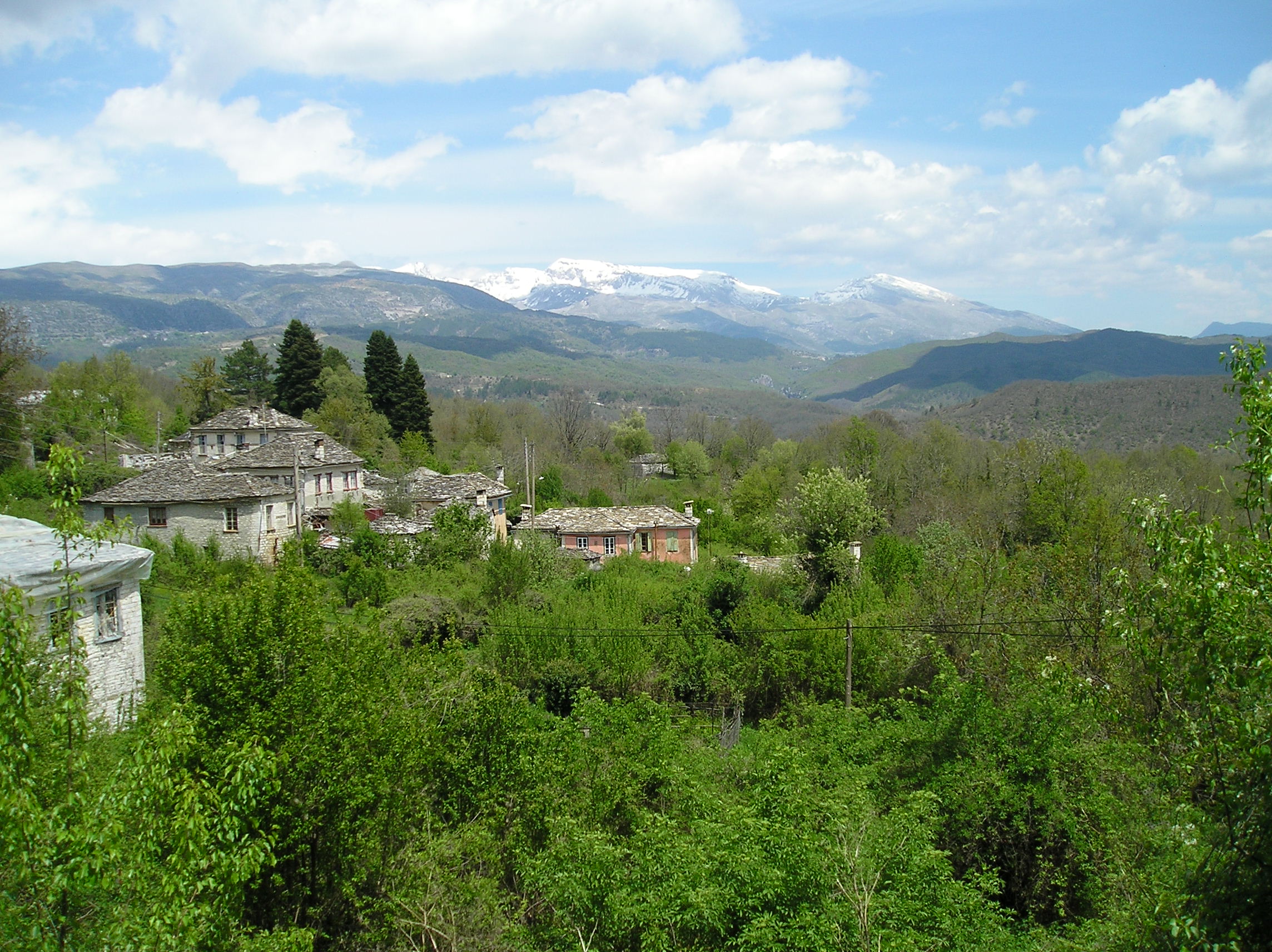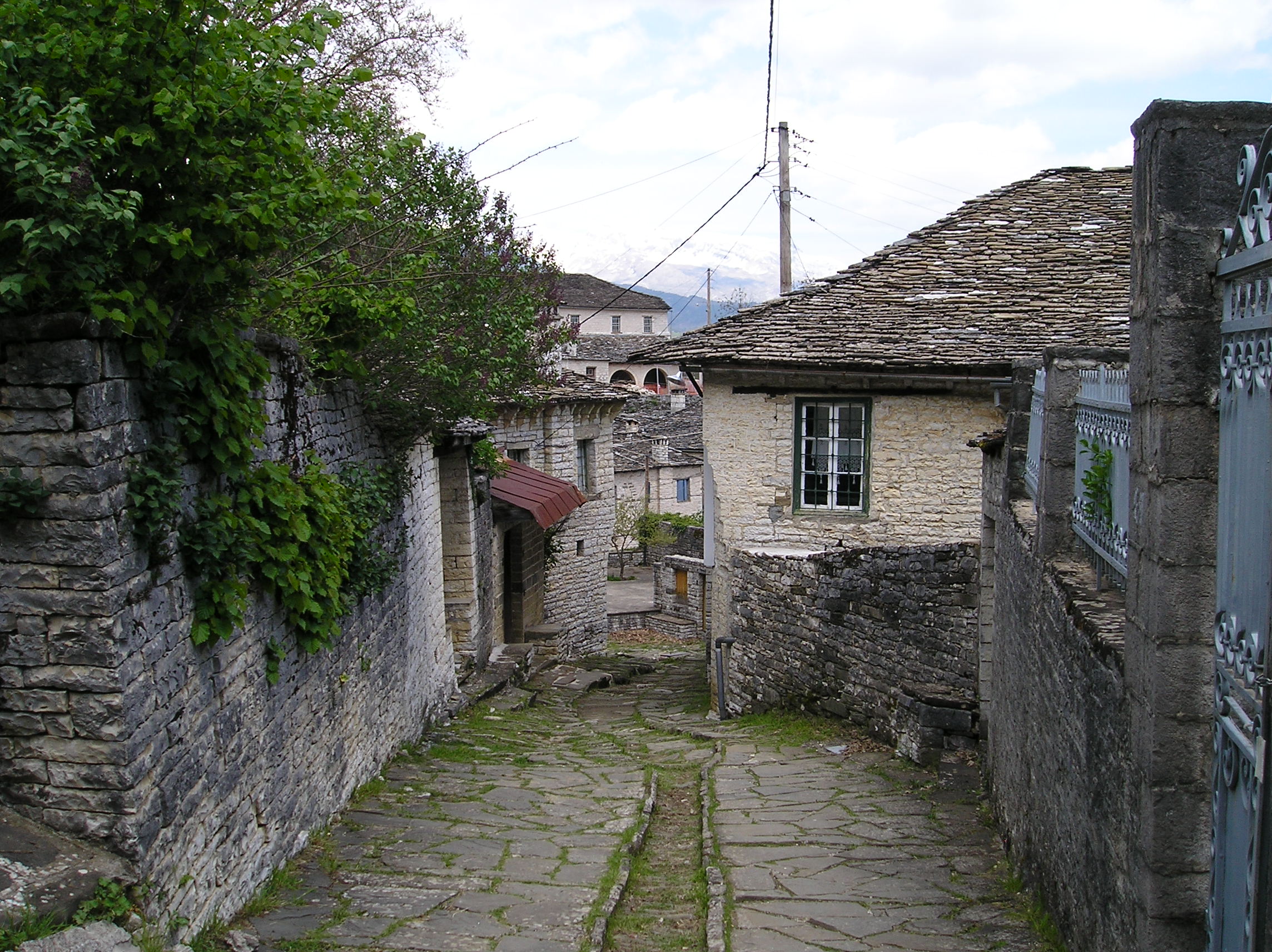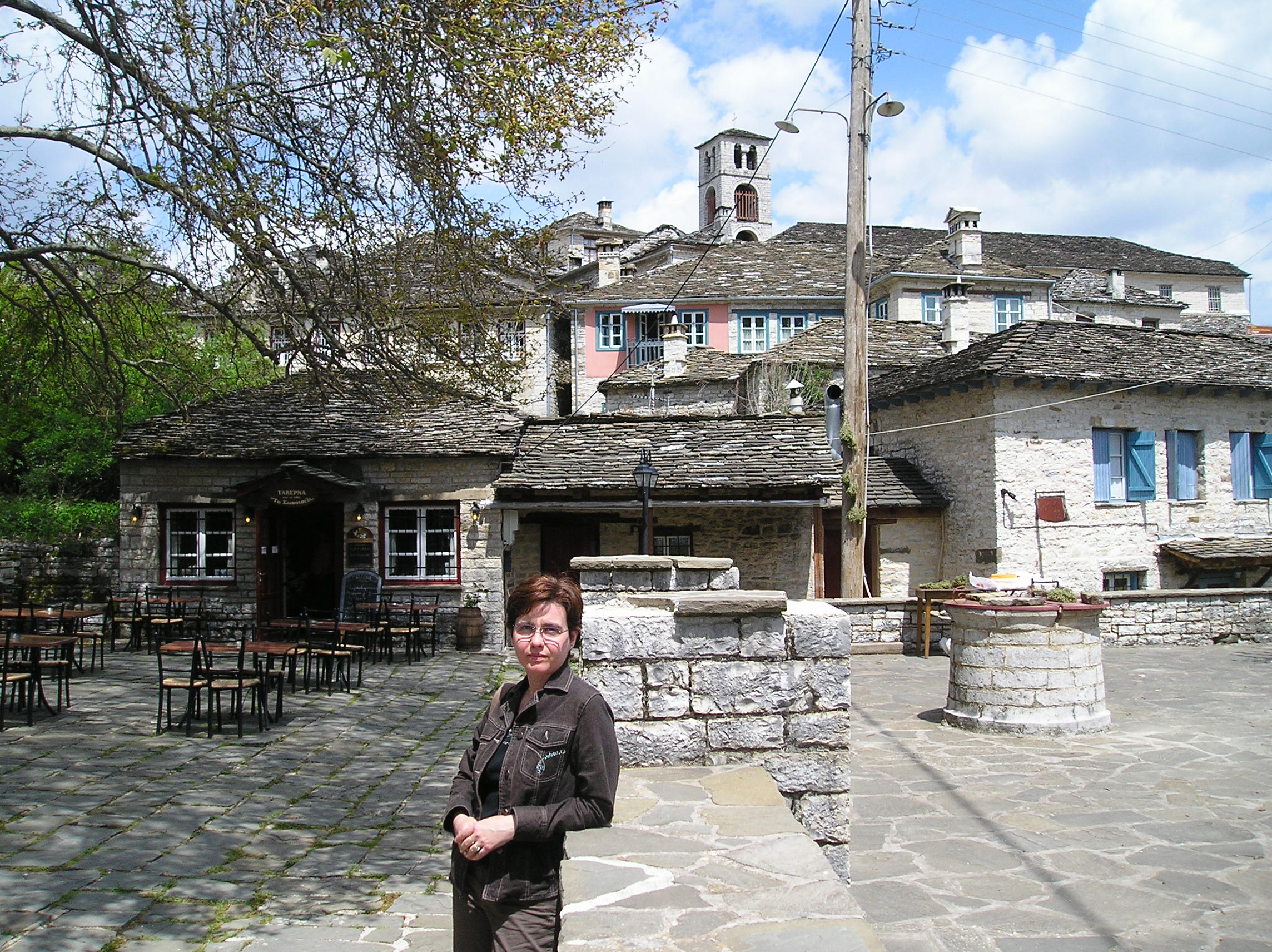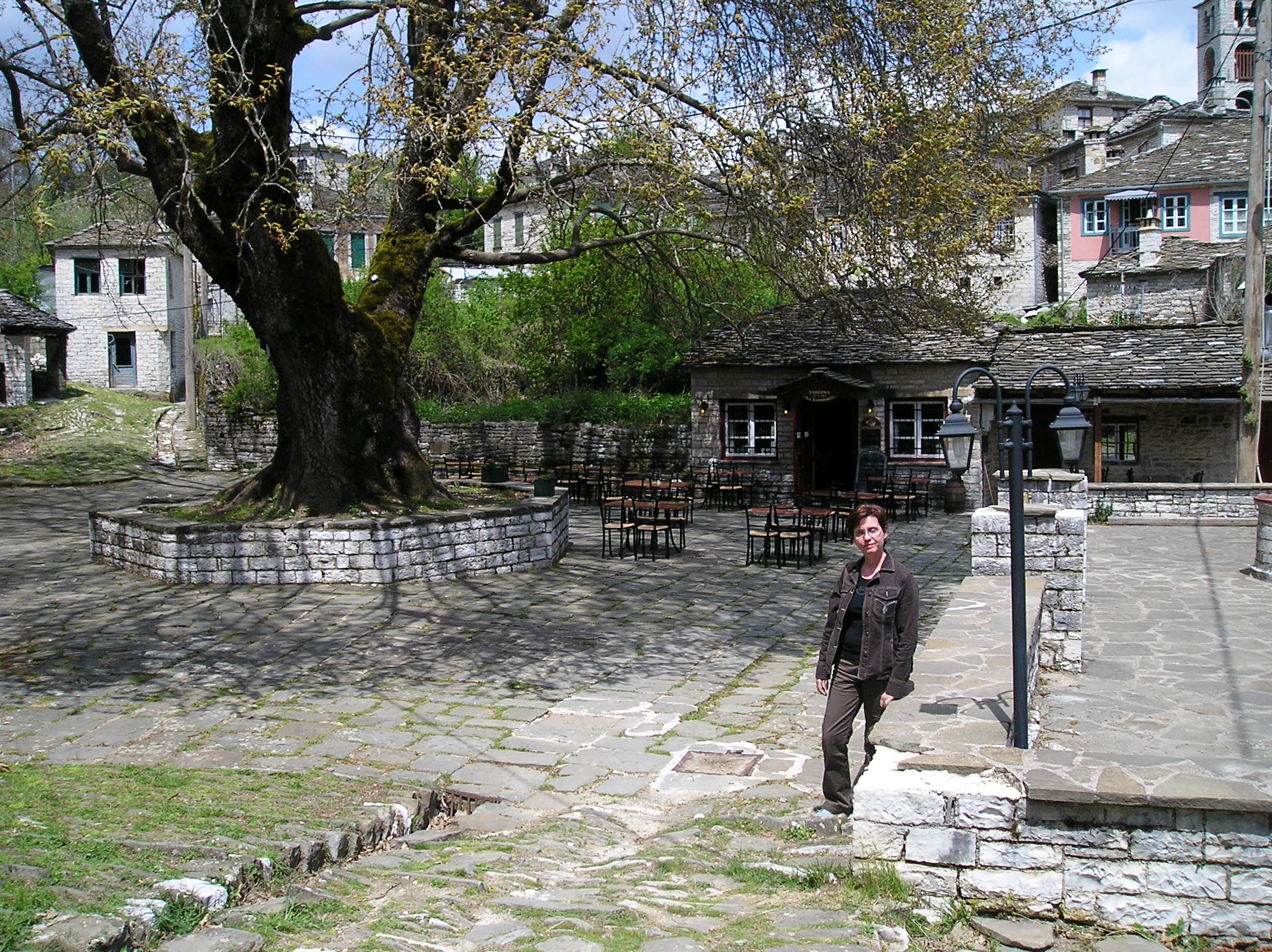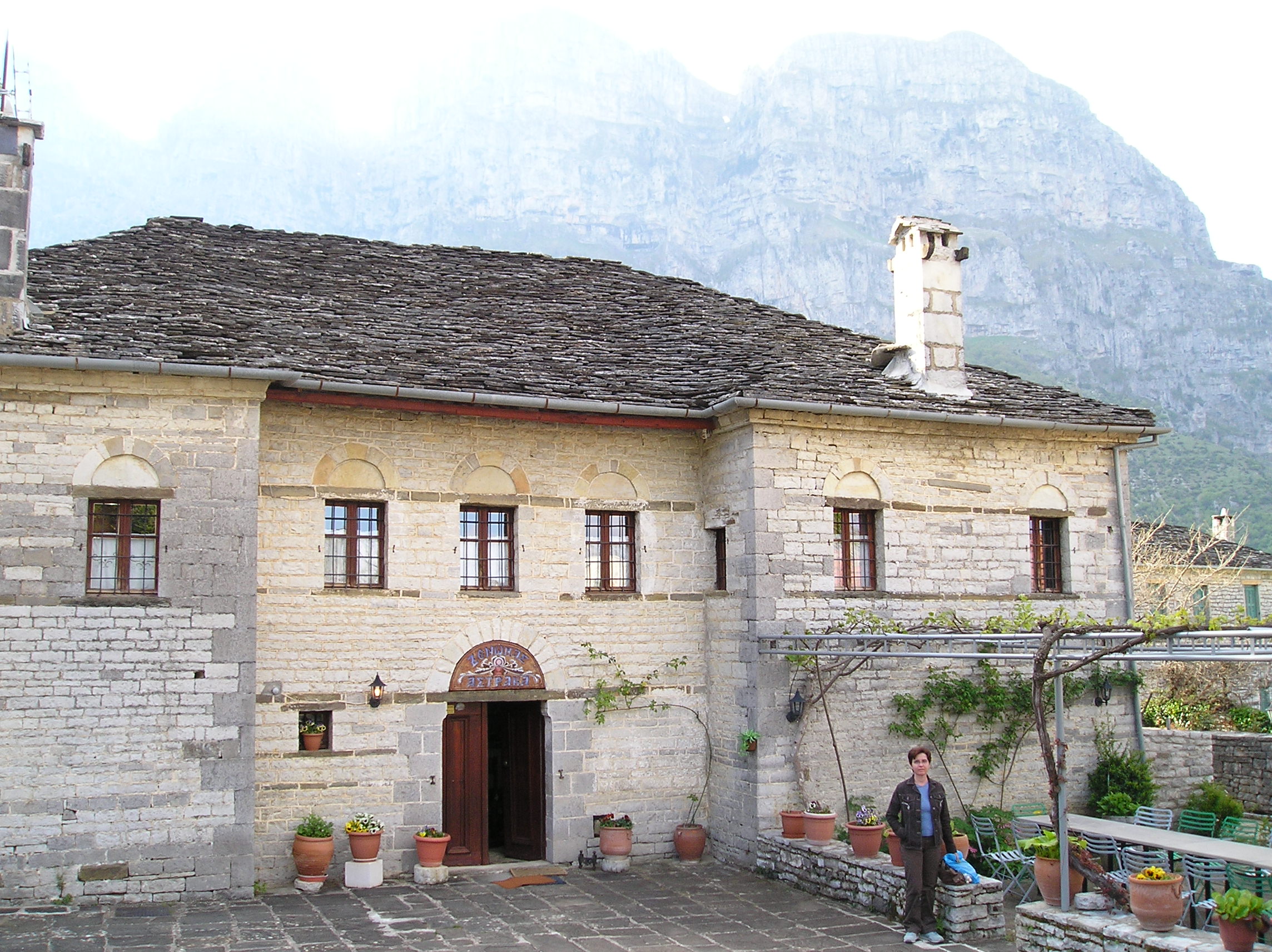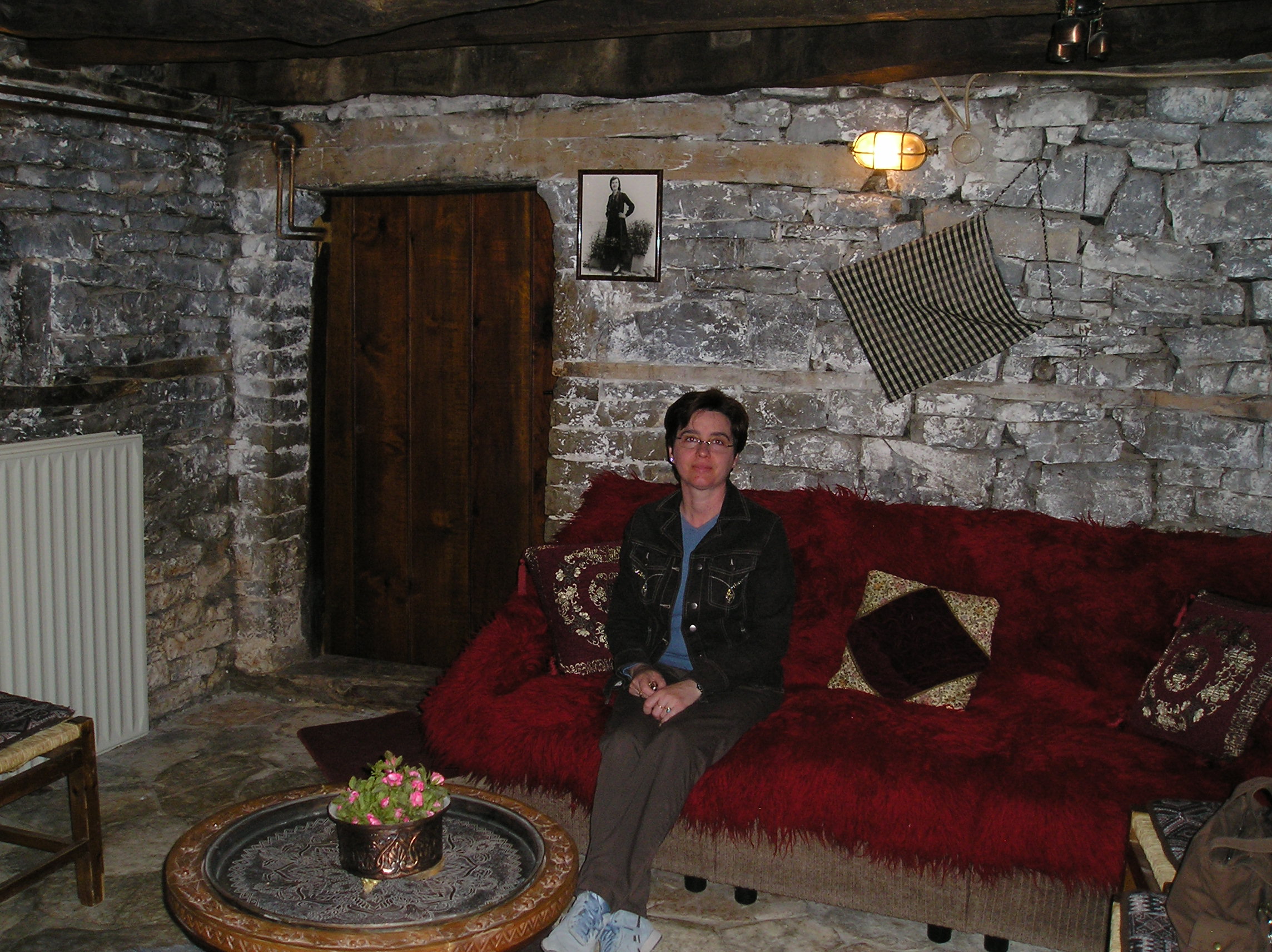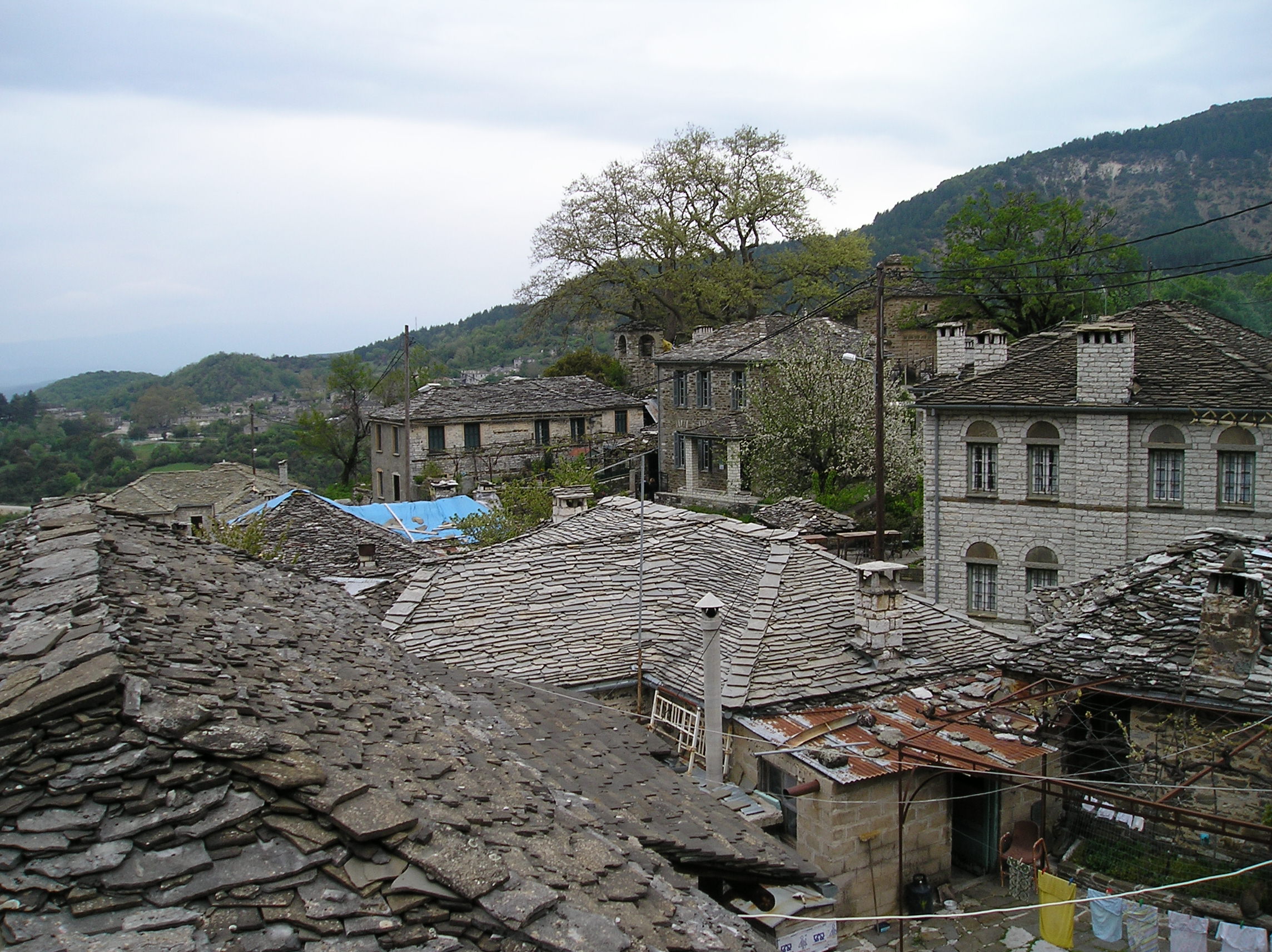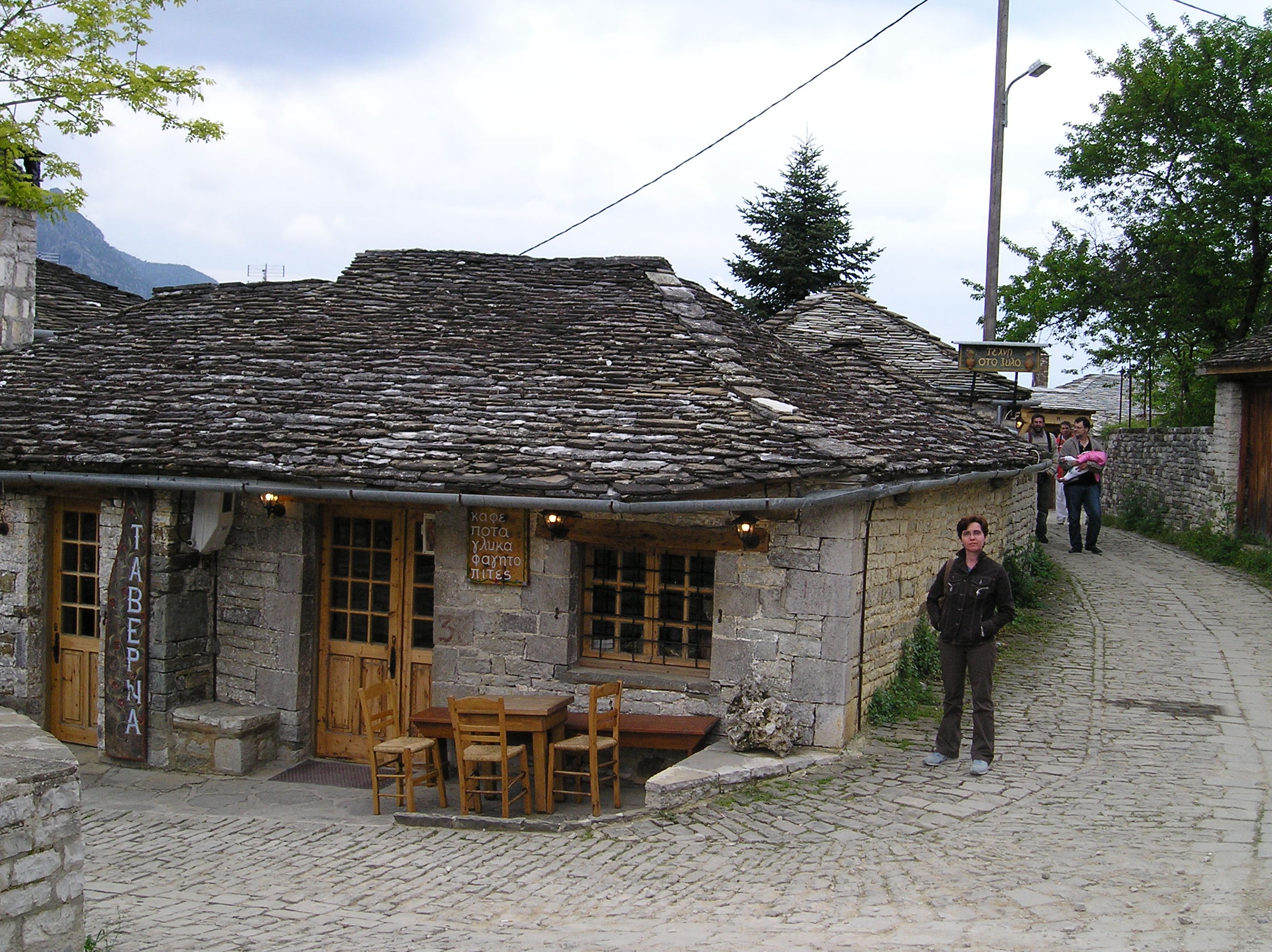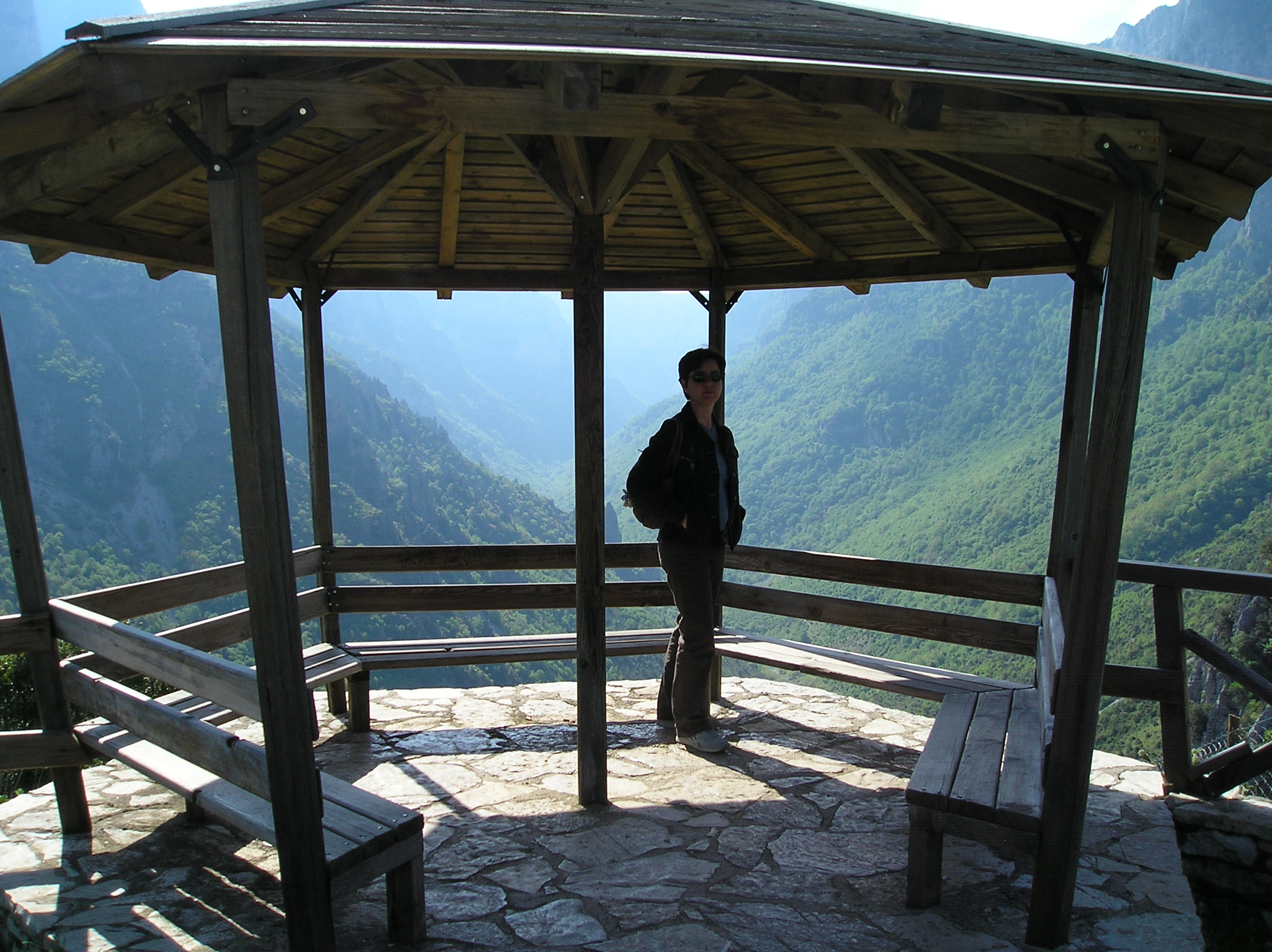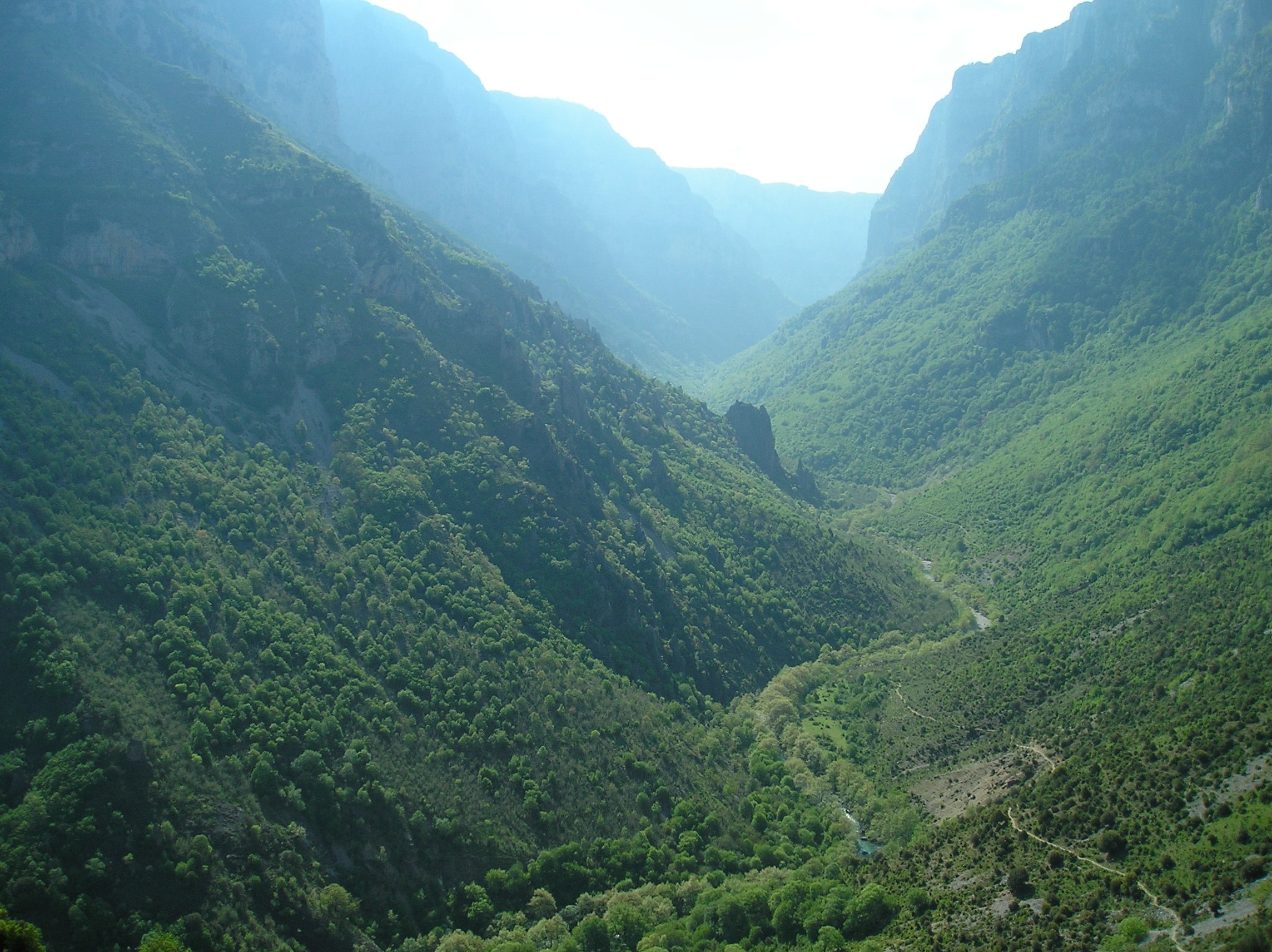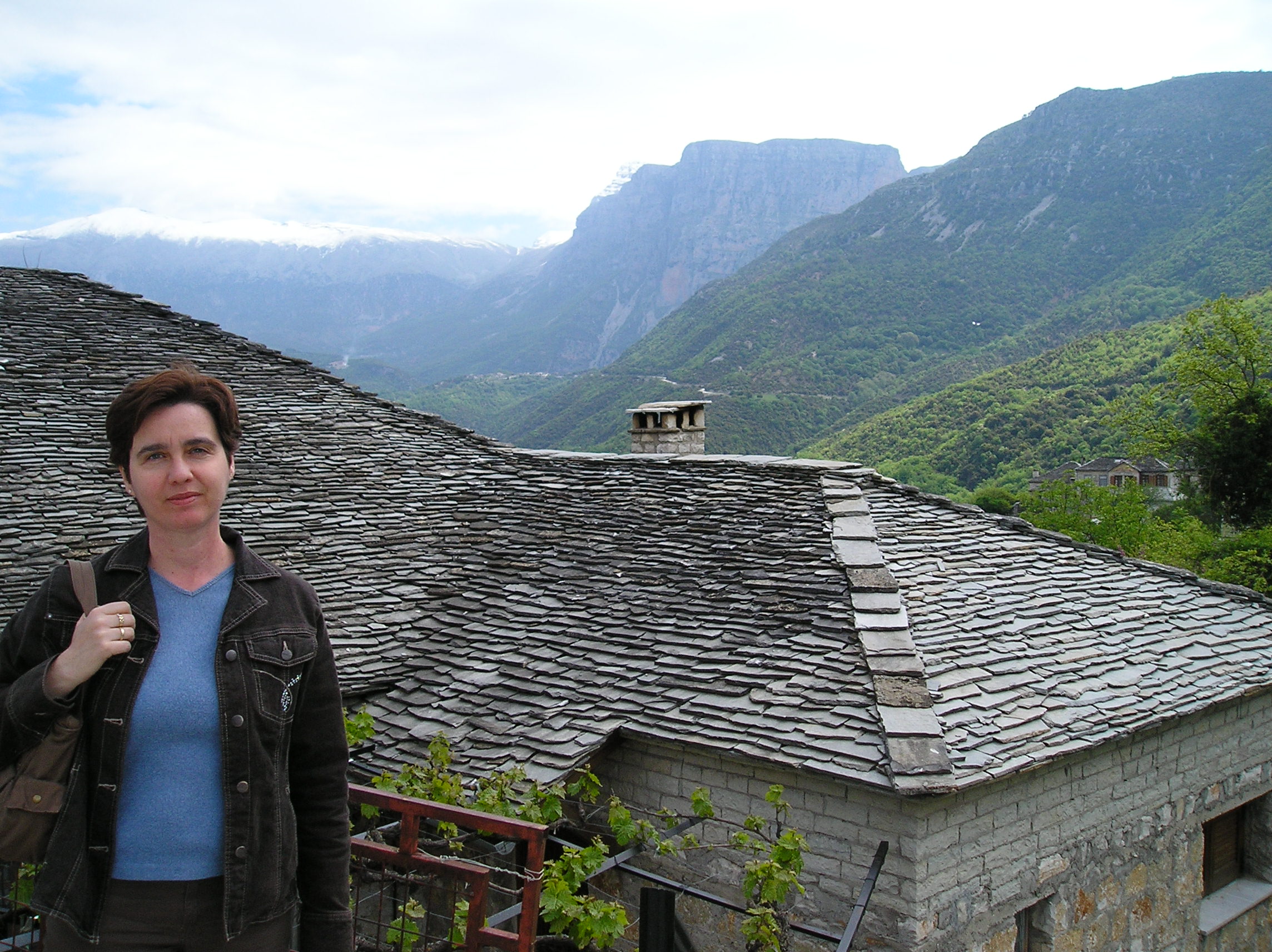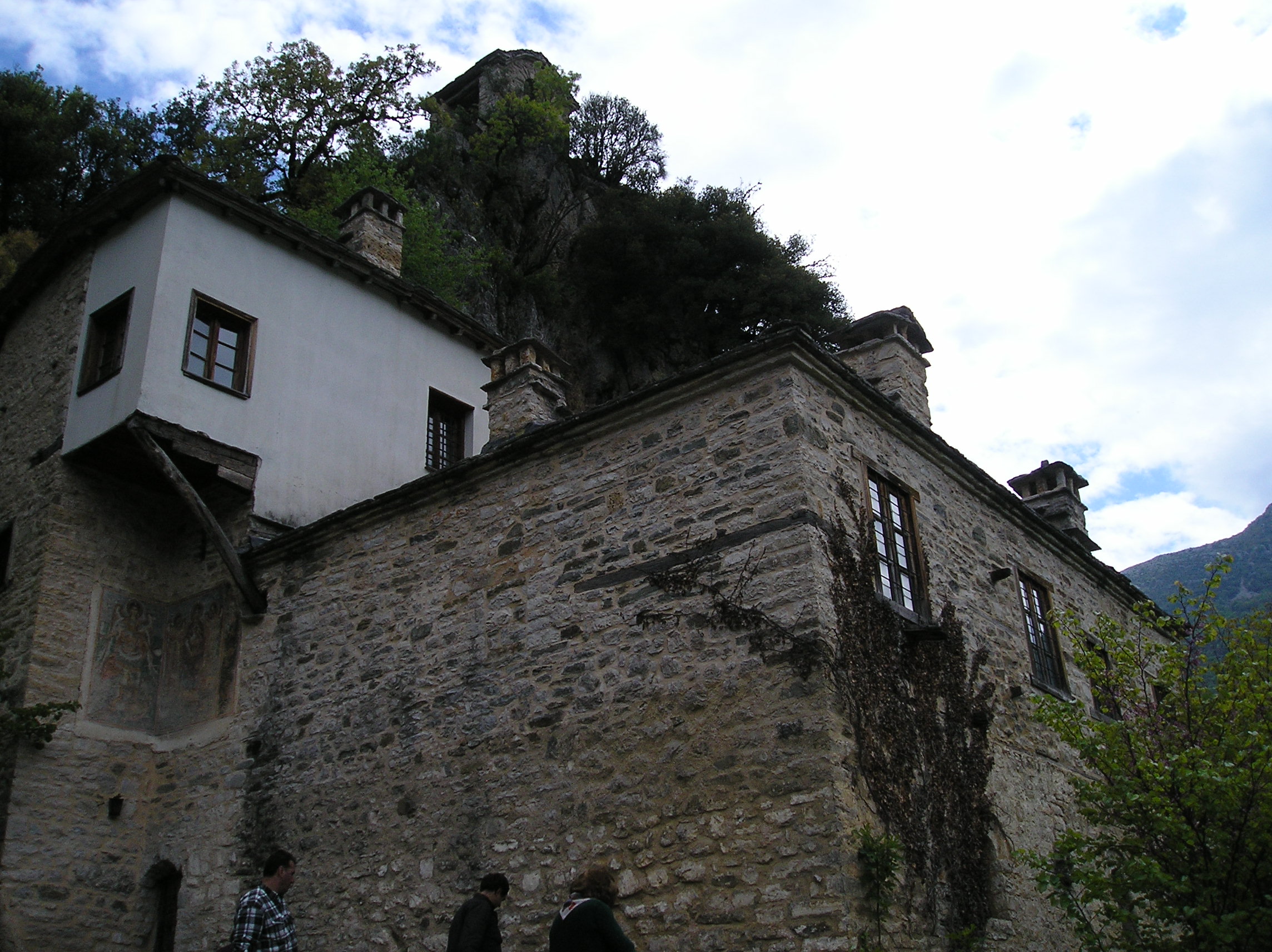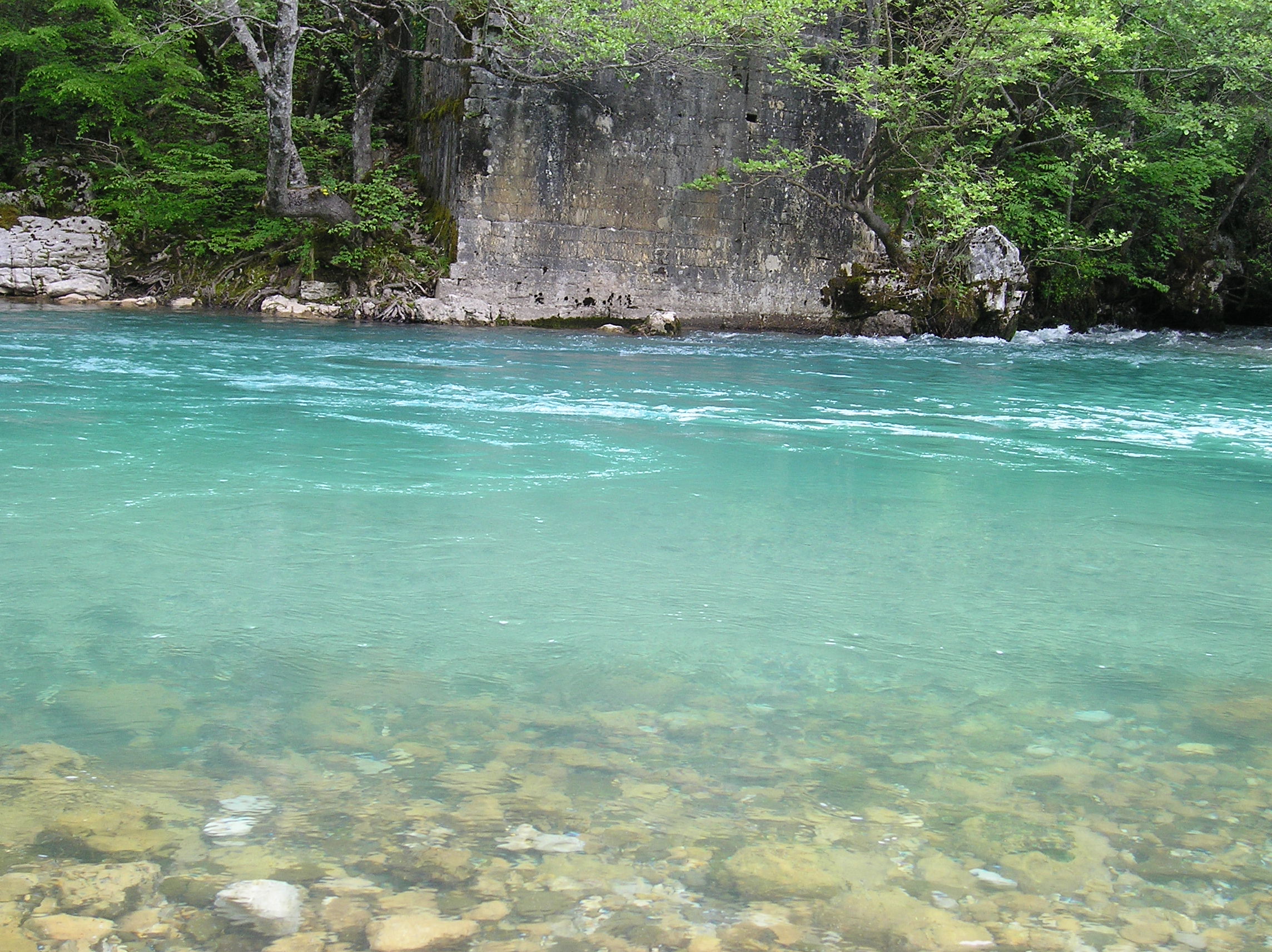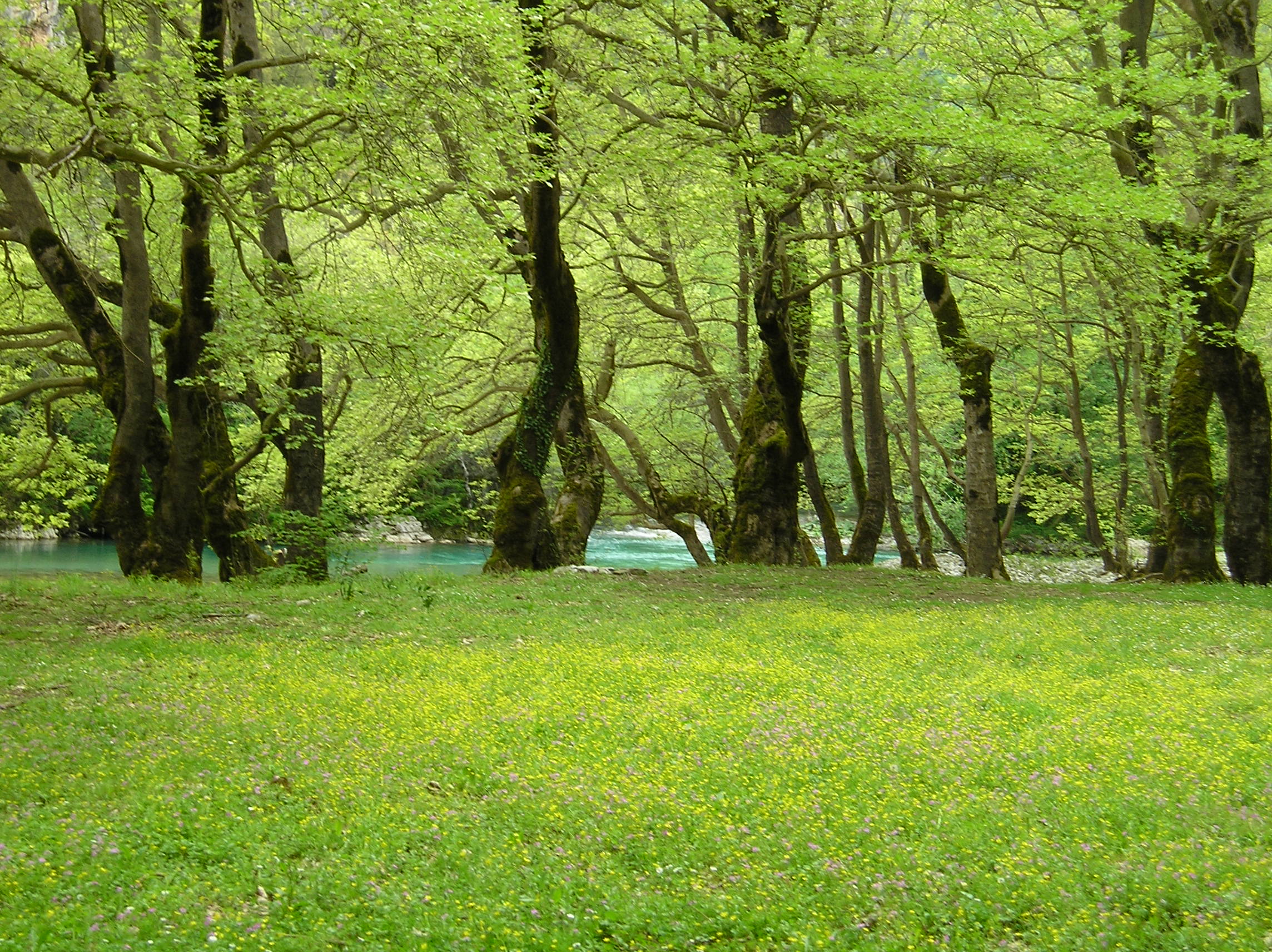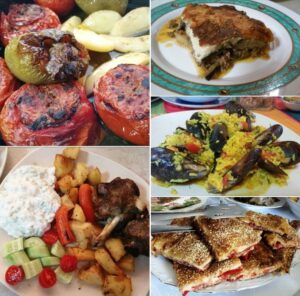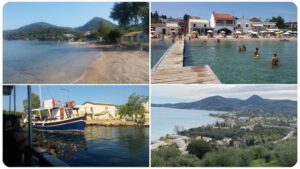The alluring area of Zagori on the mountains of Epirus is where I set my supernatural romantic suspense novella, “The Boy on the Bridge.” This amazing place of lush greenery and old stone bridges stole my heart away when I visited it with my husband a few years back.
Scroll al the way down to get a FREE copy of this awarded short read!
Zagori is a place of astounding beauty and it’s incredibly peaceful… To visit it, is to become enchanted, and you cannot help but leave a part of your heart forever behind when you depart. Andy and I visited Zagori in the spring when the snow and the ice had melted and the treacherous uphill roads were a pleasure to drive on without distractions, except maybe the frantic clicks of the camera from my enthused husband by my side.
Our first stop was the village of Monodentri so we could visit the Monastery of Agia Paraskevi and enjoy its generous view to the Vikos gorge. As soon as we parked at Monodentri and stepped out, we found ourselves before a maze of cobbled stoned lanes. The village captured our hearts from the very first moment…
- On the way to the monastery at Monodentri
- View to Vikos Gorge from Oxia (near Monodentri)
We took the cobbled road to the monastery quite early in the day, having set off from the city of Ioannina after a very early breakfast at our hotel. There were not many tourists around and we thought that, at any moment, we’d see a flock of sheep or the odd mule walk up the cobbled road past us, right through the middle of the path where special stonework had been laid for the animals’ passage back in the old days.
- Kalogeriko bridge near the village of Kipi
- Kokkori bridge near Dilofo and Kipi
Zagori (or Zagorochoria) is a complex of 45 quaint villages in the prefecture of Epirus in the northwest of Greece. Some of these villages are situated at high altitude offering magnificent views of the Pindus mountaintops. Often, as the visitor travels around the villages, they feel compelled to stop and marvel at the weathered stone bridges that are scattered all over this area. Found in deserted landscapes more often than not, they look rather forlorn but nonetheless, they remain unique landmarks of astounding beauty.
The word Zagori derives from the Slavic words “za” that means “behind” and “gora” that means “mountain”. The ancient Greek name “Paroraioi” has exactly the same meaning, i.e. “The people who live behind the mountains”. The villages of Zagori are a feast to the eyes made of earth and stone and they have been exquisitely preserved through time, ever since their heyday during the country’s occupation by Turkish rule. This period of Greek history has been recorded as particularly bleak, lasting for 400 years until the Greek Revolution in 1821. Despite the devastation that had plagued the country at the time, somehow, Zagori managed to become a focal point of commercial activity.
- Kipi viewed from ‘Kapetan Arkouda’ bridge
- Kipi
Many villagers prospered and, as a result, a series of magnificent bridges were erected all across the area to facilitate the passage of merchants. One of the most prosperous villages at the time was Kipi. It is the village that inspired “The Boy on the Bridge” and, indeed, in the old days, there were many bridges around it and in the major area to facilitate the transportation of goods. I visited three of these bridges: ‘Kokkori, ‘Kalogeriko’ and ‘Capetan Arkouda’.
- The enchanting waters of Voidomatis river at Aristi bridge
- Aristi bridge
- ‘Kolybithres’ (a place of natural springs) near Mikro Papigo
- Papigo
Today, the area of Zagori is a popular holiday destination throughout the year. Hikers often return to this area to explore the mountains or to walk along the paths of the famous Vikos gorge. As well as offering a serene setting for a walk or a picnic, the river Voidomatis (named oddly ‘ox eye’) also provides the enjoyment of rafting expeditions. Visitors can often come across the unexpected opportunity to even swim while hiking across the countryside.
For example, the natural bathtubs of Ovires (or Kolybithres) that are situated between Papigo and Mikro Papigo are popular among local youths who love to cool off here on a hot summer’s day. And that is not all. Just walking around the villages is a unique delight in itself. The remarkably preserved buildings and paths are a joy to photograph and to pose by. And when you sample the local meats and pies at the local tavernas, you will be more than satisfied. There is a series of local organic meats, cheeses and wines on offer here as well as the famous Zagori herbs, syrup sweets, jam and honey.
- I left my heart in Dilofo….
- My love for this place found its way into my book…
- The last scene of The Boy of the Bridge is set at this square!
Although my husband Andy and I visited quite a few Zagori villages, only two stand out significantly among the rest. The first one is Dilofo. I count myself lucky to have been tipped off by a friend to seek out that specific village because it is not mentioned in the guidebooks and it’s hardly ever highlighted on the internet. Once we got there, we realized immediately that we were in for a rare treat. From the municipal car park, we took an alluring cobbled path and wound up in a spacious square where we sat to eat at a taverna under a huge plane tree.
There, quite unexpectedly, we sampled more than the fantastic local cuisine. We sampled a taste of the past too, a world where time stands still for you. It is a place where you suddenly forget that you own a mobile or a camera. Suddenly you find yourself whispering while you chat, as if afraid of breaking the spell of the moment. It feels somewhat foreign to step back in time and at the same time, tremendously familiar, as if you become privy to the life of the people who lived here a long time before you were even born. In an eerie kind of way, it felt like the echoes from the hoofs of the horses were only now dying down, like the area’s renowned builders had only recently laid the tiles on the village house roofs. Dilofo is such a pleasure to discover and to me it is, by far, Zagori’s hidden gem. It is a place that is bound to enthuse and mystify the visitor no matter how many times they’ve been there before.
- Our hotel at Papigo, ‘Astraka’
- The reception. So cozy!
- Rooftops at Mikro Papigo
- Papigo
Papigo, on the other hand, is quite well known and also highly popular among tourists. We chose this enchanting village for two overnight stays in a traditional inn called “Astraka”, named after one of the mountains that tower above it. Papigo stands on the top of a mountain itself, at the end of a treacherous road that snakes endlessly uphill in a way that makes someone wonder how the locals travel during the cold, icy months of winter. Papigo is tiny but the beauty of it is indescribable. Anywhere you look, you feel the unstoppable urge to press the camera button. One of the hiking paths that starts here, ends high up in the mountains where hikers can visit the lake Drakolimni (dragon lake) near the summit of mountain Gamila (camel).
- View to Vikos Gorge from Vikos village
- We saw the gorge from three places: Monodentri, Oxia, and Vikos. The view from Vikos was the best!
Papigo is situated within easy reach from the river Voidomatis, the village of Aristi, the village of Vikos with its breathtaking view to the gorge, as well as the Monastery of Panagia Spileotissa where the short walk through the forest along the river bank will remain forever indelible in my mind…
The first thing that the visitor is likely to notice about the people of Zagori is that they are uniquely lovely and hospitable. I will mention here the kindly owner at the inn who upon handing us the key to our lovely room, spent a good minute speaking highly of the local water supply, suggesting it makes washing oneself a whole new experience. I took her boasting with a pinch of salt I must admit but I wound up really impressed very soon after all when after a hot shower, I found out that I suddenly had the silkiest hair and skin ever.
- Aristi
- Monastery Panagia Spileotissa near Aristi Bridge
- Beautiful nature near the monastery
- The monastery is situated inside an enchanting forest
People around the restaurants and in the streets all over Zagori were equally eager to direct us and to talk but among them all, one particular local stands out in my memory simply because he was a special delight to talk to. He was an elderly man, an inhabitant of the village of Aristi. When we visited there, taking in the generous views of the snowcapped mountains in the distance, he approached us and offered a kindly greeting. He was very friendly and chatty and he introduced himself as a retired teacher. He took it upon himself to inform us about the sites and the area and he was particularly boastful of Voidomatis river, saying that its water is pure and that the locals still drink it without any qualms.
Then he stretched out his hand and pointed to the hills towering over Aristi, saying that back at the War, the locals took the hill in a battle against the enemy, thus stopping them from taking the village. Having realized at once that he meant WWII and eager to learn more, I then questioned him: “Which enemy is that?” To my surprise, he remained silent and fixed me with a curious stare that lasted a while, finally responding quite oddly: “What education do you have?” I was quite taken aback as you realize! “I am a university graduate,” I replied politely and matter-of-factly. “I am surprised then,” he said, “You should know we were fighting the Germans in the War!” to which I laughed and explained that I had only meant to ask him to clarify if he was referring to the Germans or their allies, the Italians.
I knew only too well that the Greeks were also fighting off the Italians around Epirus at the time, and we were in the heart of Epirus, after all. This seemed to make sense to him and he finally relaxed and continued to talk about the old days. I thought it was hilarious, that he should think me that ignorant, and for the whole day, Andy and I would pose the question to each other: “What education do you have?” – only to burst into the most uncontrollable giggles afterwards.
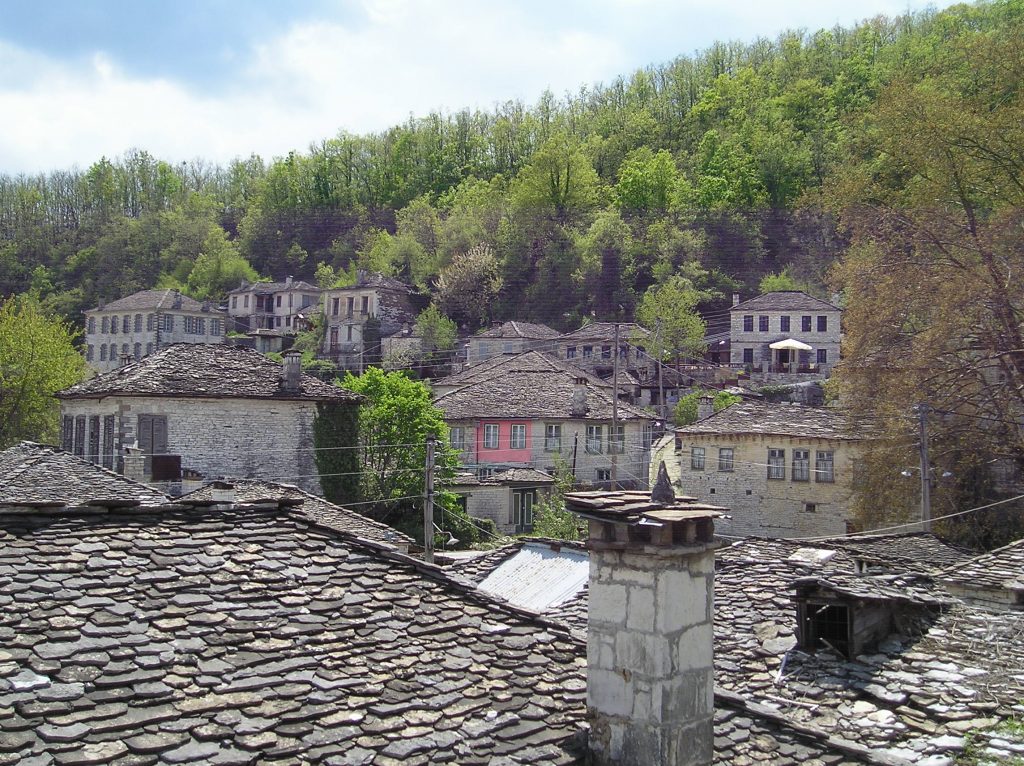
Dilofo
In all, our three-day excursion around Zagori in the spring has been a sheer delight for all the senses and one of the most unforgettable travels I have ever had. It goes without saying that we only saw a fracture of what’s out there to see and that a return there is as desirable as it is inevitable in the years to come.
I’ve shared more photos from each area I visited in Zagori on my Facebook profile, and you’re welcome to check them out here:
Kipi-Kalogeriko Bridge-Kapetan Arkouda Bridge: https://www.facebook.com/efrosini.moschoudi/posts/10225320577262189
Monodentri-Agia Paraskevi Monastery-Oxia-Kokkori Bridge: https://www.facebook.com/efrosini.moschoudi/posts/10225384334376077
Dilofo: https://www.facebook.com/efrosini.moschoudi/posts/10225414582852270
Aristi village & Aristi bridge: https://www.facebook.com/efrosini.moschoudi/posts/10225449406722845
Papigo-Kolymbithres-Mikro Papigo: https://www.facebook.com/efrosini.moschoudi/posts/10225473470204417
View to Vikos gorge from Vikos village-Monastery Panagia Spileotissa: https://www.facebook.com/efrosini.moschoudi/posts/10225513760691654
How to get to Zagori:
CENTRAL ZAGORI: From Ioannina, take the road to Konitsa. At 19 km, after the metal bridge, turn off right for central Zagori. Here you can visit Monodentri and the Monastery of Agia Paraskevi, Oxia, Dilofo, Kipi, the single arch bridge of Kokkori and the three-arch bridge of Plakida (Kalogeriko). In central Zagori, you can enjoy a view to the Vikos gorge both from Monodentri and Oxia.
WEST ZAGORI: From Ioannina, take the road to Konitsa. At 38 km, turn off after Kalpaki and head to Aristi. From there, you can also visit Vikos, the Monastery of Panagia Spileotissa, the Aristi bridge, Papigo, Kolybithres, Mikro Papigo. Vikos offers the most breathtaking view of the Vikos gorge and it is unmissable.
Some Kilometric distances:
IOANNINA-DILOFO : 32 KM
IOANNINA-KHPOI : 35KM
DILOFO-PAPIGO: 28KM
DILOFO KONITSA : 36KM
IOANNINA-PAPIGO 55 KM (takes approx. 1 hr and 15 mins)
ATHENS-PAPIGO 495 KM

GET YOUR FREE COPY OF THE BOOK HERE
YOU KNOW WHAT THEY SAY… SHARING IS CARING! Tweet this to spread some love:
Zagori, Epirus. A journey through time... #Greektravel #beautiful #Greece Share on X
3 FREE books for you! Sign up below to receive them instantly!
NEW! Clean Christmas romance. Single mother Cathy Roussos gave up on love long ago, and veterinarian Alex Rallis doesn’t believe in it, but one magical Christmas on a Santorini farm might just change everything…
Check it out on Amazon Read a FREE sample!
A clean romantic suspense short read with an unreliable narrator that’ll keep you guessing! Vera is losing her mind over famous actor Yannnis Ksenos, except, she isn’t just a fan… Now, she plucks up the courage to ring his doorbell… Visit Amazon

